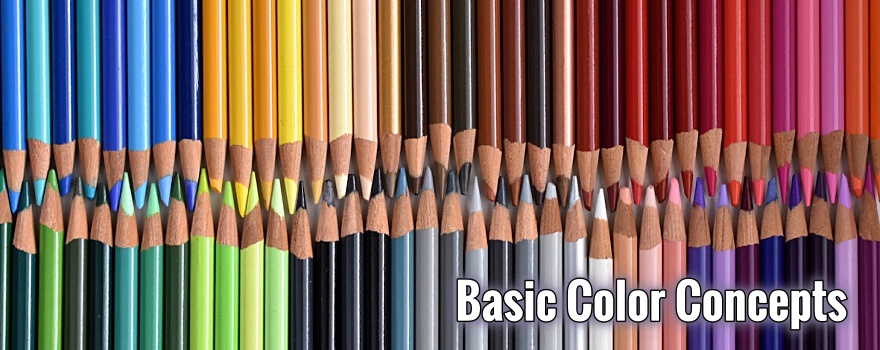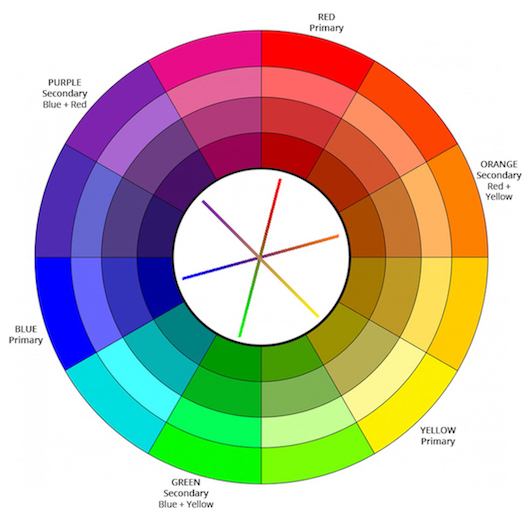General
Basic Color Concepts

Color choices. We talk about complementary or contrasting shades in interior design all the time. While color is all around us, what do you know about basic color concepts?
Basic Color Concepts: The Color Wheel
It’s one of the first things learned in the field of visual arts. The color wheel is a chart showing the connection among colors. Shown below is a simple version of color categories. In addition, some charts can be quite extensive, showing tertiary colors, warm vs cold colors, and even colors which are thought to represent emotions or conceptual ideas.

Red / Blue / Yellow:
First of all, these are primary colors. No mixture of other colors will create these three original colors. But using primary colors in any combination will create a spectrum of colors.
Orange / Purple / Green:
In addition to primary colors are secondary colors. They are created by blending two primary colors together. Hence, red plus blue becomes purple. Blue with yellow makes green. Yellow and red create orange.
Choosing a color palette
When it comes to choosing a palette for your home, you’ll hear designers and painters talk about colors using terms like neutral, complementary or analogous.
Complementary colors are direct opposites on the color wheel. As a result, you’ll find red opposite green; blue opposite orange; and yellow opposite purple. They create quite a contrast when used properly. Therefore, in home design, it’s best to choose one as the statement color and use the other as an accent.
Analogous colors sit side by side on the color wheel and share a common color. They’re usually made up of one primary, one secondary and one tertiary color. (Therefore, on the color wheel: red/red-orange/orange as one or blue/blue-green/green, etc.) This combination of color often produces a monochromatic effect. Think “earthy” tones of cinnamon, sage, mustard; or seafaring shades of aqua, seafoam green and navy.
Warm tones: On the color wheel, the tones from red/purple through yellow.
Cool shades: On the color wheel, blue/purple to green/yellow are considered cooler.
Neutral colors: White, black, gray, brown. Remember, while these are considered neutral, there may be underlying hues to the color, making them appear cool or warm.
Furthermore, there are no set rules when it comes to decorating your home. The information here can help when you’re looking for that special combination of color tones. Finally, as you paint rooms or decide on decor for your home, use the colors you love. Choose one to be the focal point (or statement color), with one or two more colors as accents.
